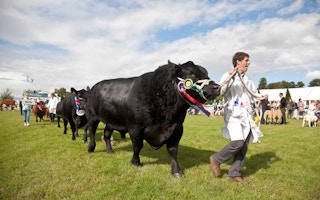British scientists have worked out how to turn agricultural land – which currently produces 10 per cent of the nation’s greenhouse gas emissions – into a “carbon sink” that soaks up carbon dioxide.
The answer is simple: take more land out of food production, restore natural habitats, and allow forests to grow again.
If, in the next 35 years, the UK increased forest cover from 12 per cent to 30 per cent, and surrendered 700,000 hectares to revert to peat bog, that would be enough to meet government ambitions to reduce agricultural greenhouse gas emissions by 80 per cent.
The extra helping of woodland and wetland would go a long way to supporting the UK’s declining population of wild things – including many species that are a source of anxiety for conservationists – and deliver more space for recreation. And the same set of decisions would go some way to reduce the risks of flooding.
Pastoral areas
But after sparing the land for wildlife, farmers would need to increase yields from the remaining agricultural and pastoral areas, say the authors of a new study in Nature Climate Change.
The area proposed for woodland cover would be close to that already achieved in France and Germany, but still less than the average for all Europe.
Such restoration alone would go some way to meeting targets imposed by the government to reduce the threat of catastrophic global climate change driven by greenhouse gas emissions that result from changes of land use and the combustion of fossil fuels.
“
Land is a source of greenhouse gases if it is used to farm fertiliser-hungry crops or methane-producing cattle.
Andrew Balmford, professor of conservation science at the University of Cambridge
Andrew Balmford, professor of conservation science at the University of Cambridge, and one of the report’s authors, says: “Land is a source of greenhouse gases if it is used to farm fertiliser-hungry crops or methane-producing cattle, or it can be a sink for greenhouse gases – through sequestration.
“If we increase woodland and wetland, those lands will be storing carbon in trees, photosynthesising it in reeds, and shunting it down into soils.
“We estimate that by actively increasing farm yields, the UK can reduce the amount of land that is a source of greenhouse gases, increase the ‘sink’, and sequester enough carbon to hit national emission reduction targets for the agriculture industry by 2050.”
The researchers offer more than just a prescription for emissions reduction: their paper identifies a suite of farm and animal management improvements that could raise yields by an average of 1.3 per cent per year until 2050. Food consumption in the UK is likely to rise by 38 per cent by 2050, but the researchers believe the target can be met without increasing food imports.
Food imports
However, a study in the Royal Society’s Interface journal shows that the UK has become increasingly dependent on food imports since the 1980s, with about 50 per cent of its food and feed currently being imported.
In effect, the UK is exporting the environmental impact and leaving producer nations with the challenge of reducing greenhouse gas emissions released in the service of the British supper table.
The UK’s “land footprint” – another term for the global area of land devoted to delivering British food and animal feed –increased by 23 per cent between 1986 and 2009, while associated carbon dioxide emissions increased by 15 per cent, say Henri de Ruiter, an environmental scientist at the James Hutton Institute in Aberdeen, and colleagues.
At present, two-thirds of all cropland needed to produce the UK’s food and feed is located overseas, while 64 per cent of associated carbon dioxide emissions are emitted abroad.
The report concludes: “These results imply that the UK is increasingly reliant on external resources, and that the environmental impact of its food supply is increasingly displaced overseas.”

















